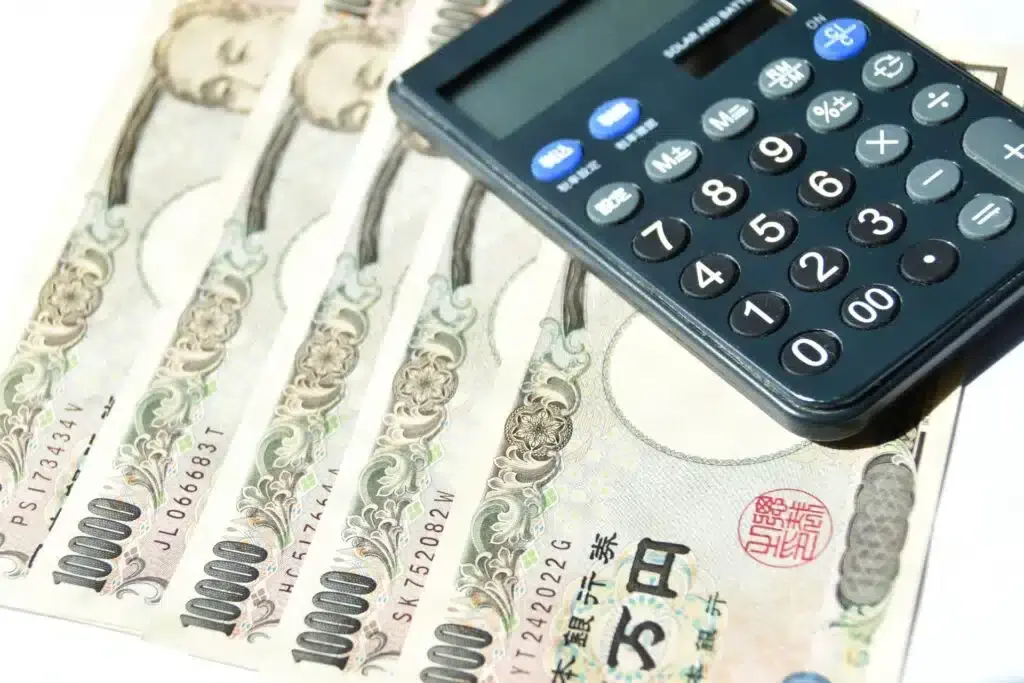Stock Option Schemes in Japan and the Design of Tax-Qualified Stock Options

In modern corporate management, particularly for growth-oriented companies, the acquisition, retention, and motivation enhancement of talented individuals are key to business success. One powerful incentive tool to achieve this goal is stock options. In Japan, the adoption of stock option schemes is accelerating, especially among startups, as a means to offer attractive compensation to talent while keeping financial burdens low.
The stock option system in Japan is classified into two main types based on tax treatment: “tax-qualified stock options” and “non-tax-qualified stock options.” The choice between these has a significant impact on the tax burden for both the granting company and the recipient individual, making a deep understanding of the Japanese legal system essential for their design.
However, the Japanese stock option system is governed by complex requirements that span multiple laws, including the Japanese Companies Act and the Japanese Special Tax Measures Act, and its interpretation and operation require specialized knowledge. Furthermore, recent tax reforms have revised some of these requirements, making the system more accessible, especially for startups. For example, there have been increases in the annual limit on the exercise price of options, expansion of choices for the storage and management of shares, and an extension of eligibility to grant options to highly skilled professionals outside the company. These reforms reflect the Japanese government’s policy intentions to strengthen the international competitiveness of the startup ecosystem and to actively attract and retain high-level talent. As a result, the attractiveness of the Japanese market is expected to increase, potentially accelerating investment and the inflow of talent from overseas.
This article will focus on the design of tax-qualified stock options in Japan, detailing their legal basis, key requirements, and tax advantages.
What Are Stock Options? Their Purpose and Legal Basis Under Japanese Law
The Definition of Stock Options and Their Role as Incentives Under Japanese Corporate Law
Stock options refer to the right to receive shares of a corporation by exercising the option. In Japan, this is defined as “the right to subscribe for new shares” under Article 2, Paragraph 21 of the Japanese Companies Act. Under Japanese law, joint-stock corporations and special private companies are permitted to issue these rights to subscribe for new shares.
The primary purpose of companies implementing a stock option scheme is to enhance the motivation of stakeholders such as officers and employees, encouraging them to contribute to the company’s development. This system functions not merely as an alternative to monetary compensation but as a crucial element of talent strategy within a company’s growth strategy. The following benefits are expected:
Firstly, companies can provide incentive compensation without incurring monetary expenses. This is particularly beneficial for startups and venture companies that may not have sufficient capital. For early-stage companies with limited funds, stock options serve as a strategic tool that allows them to focus their capital on core business activities such as research and development and market expansion while simultaneously securing top talent.
Secondly, the value of stock options is directly linked to the rise in the company’s stock price. Therefore, the option holders (those granted stock options) are strongly motivated to contribute to the company and enhance its value, thereby maximizing their own benefits. This direct profit linkage creates a structure where employees commit to the long-term value enhancement of the company for their own benefit, which is expected to boost overall corporate productivity and innovation. Employees function not just as labor but as powerful tools with the mindset of co-managers of the company.
Thirdly, for companies expected to grow, stock options become an attractive means to acquire and retain top talent, which might be challenging with regular salaries alone. To make stock options an effective incentive system, it is essential to design them carefully according to their intended purpose, not just to implement the procedure.
Types of Stock Options in Japan: Tax-Qualified and Non-Tax-Qualified
In Japan, stock options are primarily categorized into two types based on their tax treatment: “tax-qualified stock options” and “non-tax-qualified stock options.” This classification is crucial in the design of the system as it significantly impacts the tax burden on the recipients.
- Tax-Qualified Stock Options: These are options that meet all the stringent requirements set forth by the Japanese Special Tax Measures Law, allowing for a deferral of taxation at the time of exercise and subjecting the shares to capital gains tax only upon sale. The system aims to reduce the tax burden on recipients and enhance the incentive effect. One of the requirements for tax-qualified stock options is that they must be issued without requiring a cash payment, indicating that Japan’s tax incentives focus on pure incentives received without payment by employees. There is a policy intent to encourage companies to provide compensation to employees without imposing a financial burden.
- Non-Tax-Qualified Stock Options: These are stock options that do not meet the requirements for tax qualification. In this case, taxation occurs at two stages: at the time of exercise and upon the sale of the shares. Specifically, at the time of exercise, the difference between the stock price and the exercise price is taxed as salary income, and when the acquired shares are sold, the difference between the sale price and the market value of the shares at the time of exercise is taxed as capital gains. Non-tax-qualified stock options tend to have higher tax rates compared to tax-qualified ones, and especially salary income can be subject to a progressive tax rate of up to 55%, significantly affecting the recipient’s actual take-home amount. There is also a potential issue known as “taxation without cash-in,” where recipients are taxed even though they have not received any cash at the time of exercise, which can be a significant burden.
Due to the significant differences in taxation timing and rates between these two types of stock options, it is necessary for companies to carefully select the appropriate option based on their objectives and the circumstances of the recipients. By meeting the requirements for tax qualification, companies can offer more attractive compensation packages and gain an advantage in attracting top talent.
Requirements and Tax Advantages of Japanese Qualified Stock Options
Japanese qualified stock options allow the deferral of income tax on the difference between the market value of the acquired shares at the time of exercise and the exercise price until the time of sale of the shares. At the time of sale, the difference between the sale price and the exercise price is taxed as capital gains. To receive these tax advantages, one must meet all the stringent requirements set forth in Article 29-2 of the Special Tax Measures Law and Article 19-3 of the Enforcement Order of the Special Tax Measures Law. The essence of being qualified under the tax system is not an exemption from taxes but a deferral of the taxation timing until the shares are sold. This allows recipients to pay taxes when they actually receive cash, significantly improving their cash flow.
Requirements for Issuing Stock Options Under Japanese Tax-Qualified Systems
While the main requirements for tax-qualified stock options in Japan are numerous, this section will explain the particularly important items.
- Principle of Gratuitous Issuance: It is required that the stock acquisition rights be issued without demanding payment (including the provision of assets other than money). This principle emphasizes that stock options are not “compensation” for employees but rather an “incentive.” It forms the core of a system designed to improve employee motivation without cash outlay, allowing employees to commit to the company’s growth without direct financial burden.
- Exercise Period: The exercise of stock acquisition rights must be made between two years after the date of the grant resolution and ten years after that date. However, with the Japanese tax reform of Reiwa 5 (2023), it has become possible for unlisted companies less than five years from their establishment date to extend the exercise period from two years after the grant resolution date to fifteen years after. This extension is a measure to allow for a longer-term incentive in consideration of the trend toward longer growth cycles for startup companies. It demonstrates the evolution of Japan’s tax system towards supporting long-term talent retention and corporate value enhancement by enabling flexible incentive designs according to the growth stage of the company. The “date of the grant resolution” had been subject to different interpretations, but it has been clarified by the National Tax Agency of Japan’s Q&A (revised in November Reiwa 6 (2024)) as “the later of the date of the resolution for solicitation or the date of the resolution for allocation (or the date of the resolution approving the total number subscription agreement).” This clarification contributes to the efficiency of system design by eliminating the risk of companies miscalculating the starting point of the exercise period and facilitating compliance with tax-qualified requirements.
- Exercise Price: The exercise price per share of the stock acquisition rights must be at or above the fair market value of the shares at the time of the grant contract. This requirement aims to prevent the occurrence of an “in-the-money” economic benefit at the time of grant. It clearly positions stock options as an incentive for value creation through company growth, rather than speculative gains. For unlisted companies, the fair market value assessment of shares is complex, and it is necessary to choose an appropriate valuation method (e.g., net asset value method) by referring to the “Property Valuation Basic Notice” published by the National Tax Agency of Japan or the “Practical Guidelines for the Valuation of Unlisted Shares” published by the Japan Federation of Certified Public Tax Accountants’ Associations. Moreover, under the Japanese Companies Act, if stock acquisition rights are issued to third parties other than shareholders at a favorable price (including for free), it is considered a “favorable issuance,” which may dilute the value of existing shareholders’ shares and generally requires a special resolution at the shareholders’ meeting. Since tax-qualified stock options are issued for free, they fall under this “favorable issuance,” making a special resolution at the shareholders’ meeting essential. The setting of the exercise price requires strategic decision-making beyond mere numerical determination, considering not only the requirements under Japanese tax law but also the concept of “favorable issuance” under the Japanese Companies Act, the dilution of existing shareholders, and the risk of future shareholder disputes.
- Transfer Restrictions: It is a requirement that the stock acquisition rights must not be transferred. This provision ensures that stock options function as an incentive for specific individuals and prevents distribution to the general public. Transfer restrictions are an important legal constraint to ensure that the system’s purpose of rewarding the individual’s contribution is maintained and to prevent the incentive from being speculatively used by someone other than the original recipient. The contrast with non-tax-qualified stock options, which can be transferred, suggests an important policy choice in Japan’s stock option system: in exchange for tax benefits, the flexibility of the recipient’s rights is limited. Companies need to consider how the presence or absence of this flexibility affects the needs and expectations of the recipients when designing the system.
Requirements for Exercising Rights
- Annual Exercise Price Limit: The total annual amount of the exercise price related to the exercise of stock acquisition rights must not exceed a certain amount. Previously, the limit was set at 12 million yen per year, but with Japan’s tax reform in Reiwa 6 (2024), this limit has been significantly increased to enhance the talent acquisition capabilities of startups.
- For stock options granted by corporations less than 5 years after their establishment date: 24 million yen per year
- For stock options granted by corporations that are either unlisted or have been listed for less than 5 years, and have been established for 5 to 20 years: 36 million yen per year. This amendment has resolved issues that traditional systems posed as obstacles in “get-rich-quick” incentive plans such as IPOs, and demonstrates the improvement of Japan’s stock option system to function as a more effective incentive in line with actual conditions. It particularly enables high-growth startups to offer larger incentives, contributing to the acquisition of excellent talent. The increase in this limit is a crucial policy support to enhance the competitiveness of Japanese startups in the global talent market and is part of creating an environment that offers incentives comparable to those of overseas competitors.
- Storage and Management of Shares: Shares acquired through the exercise of rights must be properly stored and managed by one of the following methods:
- In accordance with arrangements for the custody and management of shares, which are agreed upon in advance between the issuing company and securities firms, the shares are entrusted to securities firms in a specified manner.
- As a requirement newly established by Japan’s tax reform in Reiwa 6 (2024), the shares acquired through the exercise of rights must be transfer-restricted shares, and the issuing company must manage the shares in a specified manner. This amendment improves the convenience of the system by allowing the issuing company itself to manage the shares, in response to concerns that traditional custody with securities firms could incur costs and burdens, particularly constraining M&A for startups. The introduction of a share management scheme by the issuing company significantly reduces the operational costs and management burden of stock options for unlisted startups, making it easier for more companies to utilize the tax-qualified system. This option also offers flexibility in shareholder consent acquisition and information management during future M&As (especially in cases of becoming a wholly-owned subsidiary), potentially benefiting the smooth progression of the M&A process.
Eligibility Requirements for Grantees
The eligible recipients of stock acquisition rights are limited to officers, employees, or specific ‘external high-level professionals’ of the respective Japanese company [Article 29-2, Paragraph 1, Item 2 of the Japanese Special Tax Measures Law]. On the date of the resolution to grant, these rights cannot be given to major shareholders of the said company or their special related parties.
In the tax reform for the fiscal year Reiwa 6 (2024) in Japan, the scope of individuals eligible for the stock option tax system has been expanded to include not only directors and employees within the company but also external talents with advanced knowledge or skills. The range of certified companies and external high-level professionals has also been broadened. This expansion of eligible recipients to include ‘external high-level professionals’ allows companies to attract a diverse range of talents, such as external experts and consultants, with long-term incentives without being limited to full-time employment, promoting more flexible organizational management and the utilization of expertise. Particularly for startups, which may find it challenging to have all experts in-house during the early stages of establishment, this expansion of eligible recipients is a crucial legal support that enables them to procure diverse specialized knowledge from outside with limited resources, thereby accelerating business growth. This could potentially enhance the overall innovation creation capacity of Japan.
Characteristics and Tax Implications of Non-Qualified Stock Options Under Japanese Tax System
Non-qualified stock options in Japan are applied when the strict requirements for tax-qualified stock options are not met. Although they offer fewer tax advantages compared to tax-qualified options, they are personalityized by greater flexibility in their design.
Flexibility of Non-Qualified Stock Options
The greatest feature of non-qualified stock options is that they are not bound by the stringent requirements imposed on tax-qualified options. This allows companies to design them more freely. Specifically, the following benefits can be highlighted:
- No restrictions on the exercise period: Unlike tax-qualified options, there are no strict constraints on the exercise period. Companies can flexibly set the exercise period to align with their business plans and talent strategies.
- Transferability to others: In principle, non-qualified stock options can be transferred to others. This provides recipients with a wider range of options, such as selling the stock options or transferring them to family members or spouses. This transferability can be attractive to recipients who prioritize liquidity and control over their rights.
- No exercise limit: There is no annual exercise price limit as there is with tax-qualified options. This allows recipients to exercise a large amount of rights at once, which can lead to significant benefits, especially for companies that expect a substantial increase in stock prices in the future.
These flexibilities indicate that non-qualified options can be an appropriate choice in specific incentive scenarios or when recipients prioritize liquidity and control over tax advantages.
Taxation Mechanism and Considerations
The tax implications of non-qualified stock options differ significantly from those of tax-qualified options. Recipients are taxed in two stages:
- Taxation at the time of exercise: At the time of exercise, the difference between the market value of the shares and the exercise price is taxed as salary income or business income. This taxation is subject to progressive rates, with income tax rates potentially reaching up to 55%. One of the most important considerations for non-qualified stock options is the issue of taxation without cash income, known as “taxation without cash-in.” Recipients need to prepare funds to pay this tax before they can sell the shares and receive cash. This can place a significant burden on the cash flow of recipients, especially when exercising a large number of stock options.
- Taxation at the time of share sale: When selling the shares acquired through the exercise of options, the difference between the sale price of the shares and their market value at the time of exercise is taxed as capital gains. The tax rate for capital gains is a flat 20% (15% income tax and 5% resident tax).
Non-qualified stock options in Japan have the disadvantage of being taxed twice, especially with a high tax rate at the time of exercise. This significant tax burden can greatly affect the actual profits received by the recipients and reduce the attractiveness of the incentive compared to tax-qualified options. Therefore, companies must carefully evaluate the balance between the flexibility of non-qualified options and the resulting tax burden, and ensure that they fully explain the tax implications to the recipients.
Practical Considerations in Designing Stock Option Plans Under Japanese Corporate Law
To ensure the effective functioning of a stock option plan, it is crucial not only to meet the tax and corporate law requirements in Japan but also to incorporate various practical considerations into the design.
Implementing Vesting and Its Practice in Japan
Vesting refers to the provisions that define the period and conditions under which stock option rights become vested. The purpose of vesting is to encourage long-term retention and contribution to the company by allowing the exercise of rights only after a certain period has elapsed or specific conditions have been met.
There are mainly two patterns of vesting:
- Cliff Vesting: This pattern allows for the exercise of rights only after a certain period (for example, one year) has passed since the grant of rights, with no rights exercisable before that period.
- Graded Vesting: In this pattern, the percentage of shares that can be exercised increases over time after the grant of rights. For instance, if 100% of the rights are exercisable over five years, 20% may become exercisable after one year, 40% after two years, and so on, in a gradual increase.
In the Japanese stock option system, it is common to impose a tax-qualified requirement that one must be an officer or employee of the company at the time of exercising the rights. This condition ensures a certain level of incentive effect based on the tenure of the officers and employees, even without vesting provisions. However, explicitly setting vesting provisions clarifies the expected period of contribution from the recipient and strengthens the purpose of the incentive.
In practice, when setting up vesting, it is also necessary to consider the impact on future M&A activities. For example, in the case of an M&A involving the acquisition of a 100% subsidiary, the consent of all shareholders of the selling company is required. If a retired founding shareholder holds shares due to vesting, the risk arises that M&A could be thwarted without their consent. To avoid such risks, it is effective to set up rights in the founders’ shareholder agreement, such as the right for the remaining founders to buy back shares from the retired founder (call option), or the right to demand the transfer of shares under the same conditions as the remaining shareholders in the event of an M&A (drag-along rights). This ensures that the stock option system is designed not only for individual incentives but also aligns with the company’s future capital policy and M&A strategy.
Overview of Stock Option Issuance Procedures in Japan
When issuing stock options (new share subscription rights) in Japan, it is necessary to go through the following key procedures based on the Japanese Companies Act. These procedures are extremely important from the perspectives of corporate governance and shareholder protection.
- Resolution of the Shareholders’ Meeting: The issuance of stock options generally requires approval by a special resolution of the shareholders’ meeting, as it has the potential to dilute the value of existing shareholders’ stock. This resolution specifies in detail the terms of the stock options, such as the number and content of the new share subscription rights, the payment amount or method of calculation, the allocation date, and the exercise period. The high approval requirement of a special resolution at the shareholders’ meeting reflects the significant impact that the issuance of stock options can have on the rights of existing shareholders, demanding a high level of corporate governance and transparency.
- Determination of Offering Terms: Based on the resolution of the shareholders’ meeting, the specific offering terms are determined. This includes the number of shares for which the new share subscription rights are intended, the value of the property to be contributed upon exercise, the exercise period, the presence or absence of transfer restrictions, and the presence or absence of acquisition clauses.
- Application and Allocation of New Share Subscription Rights: After the offering terms have been determined, those wishing to subscribe to the new share subscription rights are notified of the corporate name and offering terms, and applications are accepted. Subsequently, from among the applicants, the assignees of the new share subscription rights are determined, and the number is notified. However, if a subscription contract for the total number of new share subscription rights is concluded with the prospective underwriters, the application and allocation procedures can be omitted.
- Registration of Issuance of New Share Subscription Rights: When stock options are issued, it is necessary to apply for registration of the issuance of new share subscription rights at the Legal Affairs Bureau (or local Legal Affairs Bureau) located at the company’s head office in Japan. The deadline for this registration procedure is set within two weeks from the date of issuance of the stock options. This short deadline indicates the need for companies to establish a highly organized and efficient legal and administrative process, including collaboration with legal experts, to proceed with procedures smoothly and swiftly.
Conclusion
The stock option system in Japan is an extremely effective tool for accelerating corporate growth, attracting top talent, and promoting long-term corporate value enhancement. In particular, tax-qualified stock options offer significant tax advantages, such as deferral of taxation at the time of exercise, maximizing the incentives for recipients. Recent tax reforms in Japan, including increases in the annual limit on the exercise price amount, the introduction of stock management options by issuing companies, and the expansion of eligibility to grant options to highly skilled personnel outside the company, have evolved the system to be more user-friendly for startups. These reforms are part of the Japanese government’s proactive policies to promote innovation and enhance international competitiveness in human resources, further increasing the attractiveness of the Japanese market.
However, the design and operation of stock options in Japan must comply with the complex and strict requirements set forth by the Japanese Companies Act and the Japanese Special Taxation Measures Act. There are a multitude of legal and practical considerations, including the accurate interpretation of the exercise period, the proper calculation of the exercise price, compliance with transfer restrictions, and the practical application of vesting clauses. Understanding and adhering to these requirements is essential to enjoy tax benefits and avoid future legal risks.
Monolith Law Office has a wealth of experience in providing legal services related to the design of stock options for numerous clients within Japan. We possess deep expertise in Japanese corporate law and tax law, and we are always up-to-date with the latest legal amendments. Our firm also includes several English-speaking attorneys with foreign legal qualifications, enabling us to clearly and accurately explain the complex Japanese legal system and provide appropriate support to clients who do not have Japanese as their native language. If you are considering the introduction or redesign of a stock option system in Japan, please do not hesitate to consult with our law firm.
Category: General Corporate





















